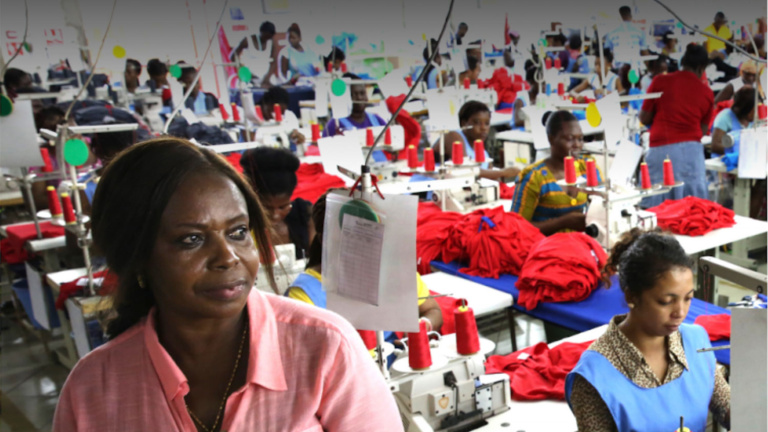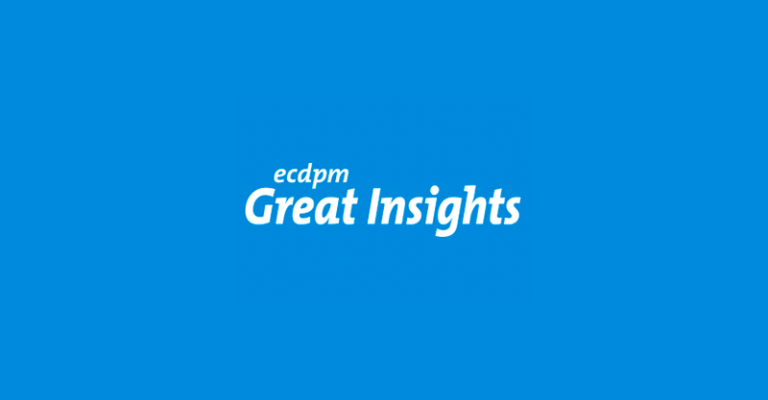
European development finance and the EBRD model
The EBRD’s ability to match private finance with public policy can help the world deliver its sustainable development goals.
The initials EBRD stand for European Bank for Reconstruction and Development. But the paradox is that, despite being founded in 1991 and having the ‘D word’ in our title, for many years we stood at one remove from the mainstream development discourse. The principal reason for this was that the EBRD was set up specifically to promote “market-oriented economies…and private and entrepreneurial initiatives”, or what I would call economic development across all its characteristics.
Thus, when attention was fixed on a narrower definition of the development problem, as represented by such priorities, as poverty eradication, access to education and reducing child mortality as exemplified in the Millennium Development Goals, the EBRD stood stage right, or even off in the wings.
Three important shifts in development
How times have changed! I would highlight three important shifts in development policy since that time. Firstly, the Sustainable Development Goals (SDGs) of 2015 have broadened our common agenda to embrace both economic as well as social imperatives, alongside the environment. The SDGs are also universal, so applicable to all countries, including middle-income countries, where we are on the ground.
So, our priorities have expanded to address issues as significant as inclusive growth, tackling inequality, developing strong institutions, building sustainable infrastructure and addressing climate change. Our European Union (EU) shareholders have, I would add, always been strong development champions, promoting stability, prosperity and sustainable growth.
The second shift is the now extreme urgency of tackling climate change. Europe has long driven the debate on how to address this existential challenge. Many of the regions neighbouring Europe where we work are particularly vulnerable and ill-equipped to manage its potentially disruptive impact.
Finally, we all now acknowledge that mobilising private finance is fundamental to achieving our objectives, as recognised in the Addis Ababa Action Agenda and last year’s new European Consensus on Development. The annual investment needed is estimated at twenty times the current volume of official development assistance. This in turn requires recipient governments to create conditions that encourage a positive investment climate. And all official actors need to deliver their own assistance in ways that support markets and capital mobilisation.
Here again the European Union is playing a vital role in coordinating and mobilising all actors on its development and external policy agenda, including the private sector. The work that is starting on the Multi-Annual Financial Framework (MFF) provides a unique opportunity to review the overall architecture to ensure we are set up to deliver. While maintaining our global shareholder base, including our countries of operations, I am very keen to strengthen the EBRD’s already extremely deep and strong relations with the EU institutions to deliver our common objectives.
Europe’s global voice
But in 2018 Europe also needs to ensure its voice is heard at the global level. The G20 Eminent Persons Group on Global Financial Governance will issue its recommendations later this year. I have the great privilege of currently chairing the group of Multilateral Development Banks (MDBs) and we are already engaging in this debate. We need to focus collectively on ensuring that we deploy each institution’s strengths, skills and knowledge to crowd in private finance and to support policy reform in emerging and developing economies.
Given this important context, it is not surprising that the EBRD and its business model are now no longer standing in the wings but squarely centre stage of the debate. Ever since our creation, our main competitive advantage has been our ability to match private finance with the delivery of public policy goals. For example by:
• engaging directly with and mobilising the private sector (finance);
• combining investment, policy engagement and capacity building for an enhanced business environment;
• operating in both the private and public sectors for the benefit of both;
• maximising the impact on the ground through our network of offices and in-depth knowledge of our countries; and finally,
• taking and managing financial risk against our own capital resources.
The EBRD approach
Applying our unique business model has allowed us to build up impressive expertise in areas such as private sector climate finance; local currency financing and capital market development; sub-sovereign municipal lending and private sector support for economic inclusion. And these are the very areas which are ever more prominent within the development landscape.
Our model’s success has encouraged our shareholders to expand the region in which we operate on four separate occasions. We now work in 37 countries across three continents and each successive expansion has underlined how fast we can scale up our activity and have real impact. From Mongolia to Turkey, to the Southern and Eastern Mediterranean and, most recently, Greece and Cyprus, the EBRD model has achieved results in countries very different from those centrally-planned economies where we started out. I might add that, other than the start-up Asian Infrastructure Investment Bank (AIIB), we are the only MDB which is currently growing its membership.
The skills, mindset and finance we bring to the market, differ from but also complement those of other development actors. Our commitment to the private sector does not mean that we undervalue other approaches. But we believe that we must pull together in a coordinated way, one based on common principles. All actors, bilateral agencies and IFIs must aim to crowd in, rather than crowd out, the private sector. As public institutions with taxpayer backing, we must take particular care not to distort the workings of the market. Concessional elements of development financing need to be well targeted, time-limited and deployed to address specific shortcomings, such as market failures and affordability, not the norm.
As the EU reflects on the post-2020 development architecture, in the context of the next MFF, my hope is that whatever is put in place plays to the strengths of all European development actors. For that to happen, open access to European blending tools and financial instruments for all players is vital. This is precisely what has been done through the new European External Investment Plan (EIP), and that is a step change which I am convinced is the right approach. I also believe we can do much more to strengthen common approaches – to ensure, for example, that we speak to partner governments with one voice on key policy priorities, even as we engage on investment programmes.
As approved in 2015 and then bolstered by the Paris Agreement, the SDGs, while ambitious, offer the best summary of our most important shared priorities. With their 2030 deadline approaching, making progress on delivery – and doing so along the lines I have sketched above – is now more essential than ever.
About the author
Sir Suma Chakrabarti is President of the European Bank for Reconstruction and Development.
Read the full magazine issue






